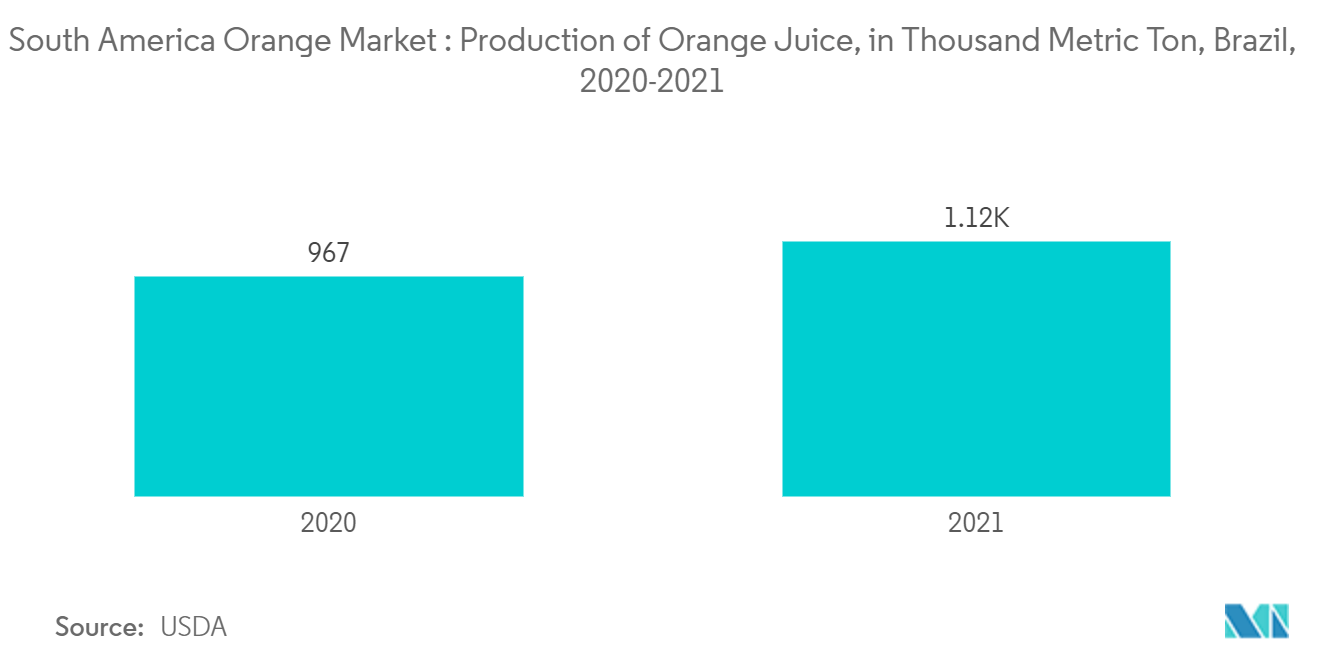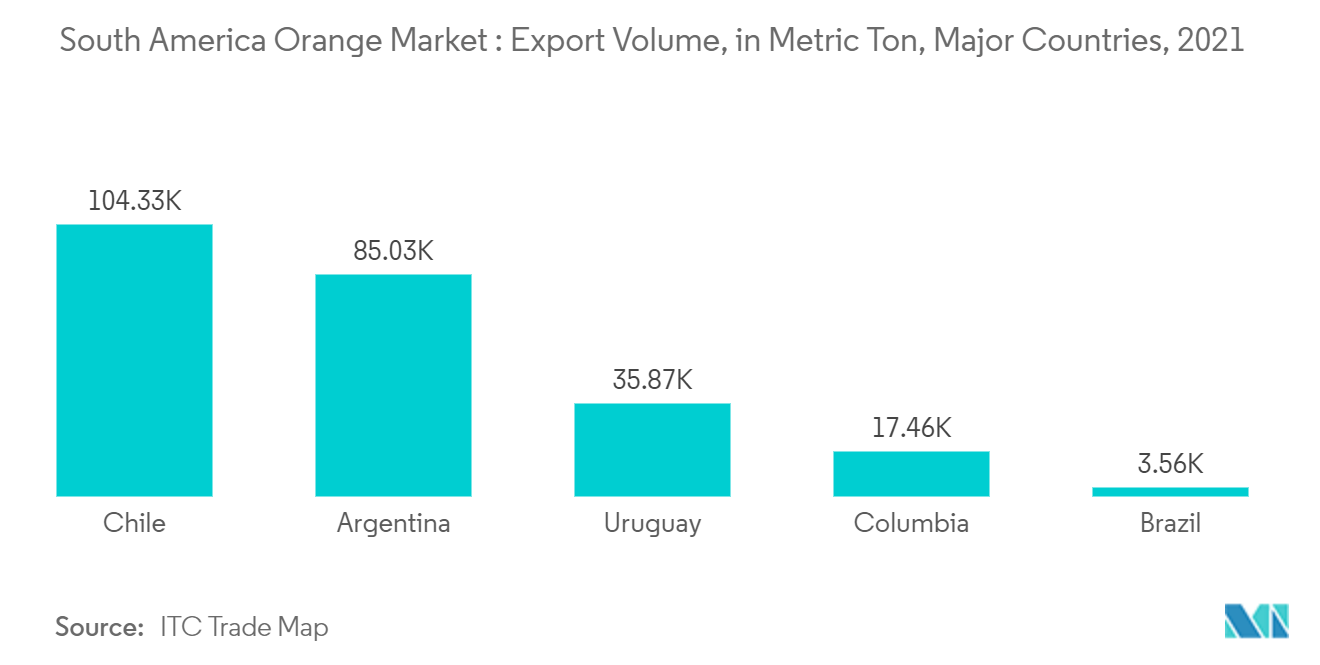Market Trends of South America Orange Industry
This section covers the major market trends shaping the South America Orange Market according to our research experts:
Brazilian Orange Drives the Food and Beverage Industry
- The Brazilian orange crop for 2022-23 is forecasted at 405 million 40.8-kg boxes (MBx), equal to 16.52 million metric tons, a 2% reduction relative to the current season. Sao Paulo and Minas Gerais are commercial citrus belts for processing in the food and beverage industry. The Sao Paulo industry is expected to process 265 million boxes of oranges for orange juice production, accounting for 1.027 metric tons of juice. Other producing states should deliver 24 million boxes, accounting for 96,000 metric tons of juice.
- Production of Brazilian frozen concentrated orange juice (FCOJ) is estimated at 1.12 million metric tons in 2022-23, a drop of 1% from the prior year. According to a United States Department of Agriculture-Foreign Agricultural Service (USDA FAS) Brazilian citrus report, the reduction is due to the lower fruit availability for processing. Total Brazilian FCOJ export for 2022-23 is estimated at 1.04 million metric tons, similar to 2021-22 (1.06 million metric tons). The Sao Paulo industry should contribute 1.01 metric tonnes of that total.
- Total Brazilian FCOJ 65 Brix equivalent export for 2022-23 is estimated at 1.04 million metric tons, similar to the revised figure for 2021-22. The production of orange juice in Sao Paulo for 2022 was at 1.12 million metric tons, an increase of 16% compared to orange juice production for 2021. This was due to the expected higher availability of fruit for processing.
- Sao Paulo projects domestic FCOJ equivalent consumption for 2022-23 at 80,000 metric tons, 65 Brix, up 5,000 metric tons compared to 2021-22 (75,000 metric tons), given that orange juice consumption has steadily increased in Brazil.

Rising Export of Oranges in European and North American Countries
- South America's top fresh orange exporting countries are Chile, Argentina, Uruguay, Columbia, and Brazil. Brazil is one of the leading exporters of orange juice but has yet to become a prominent exporter of fresh fruits. Major exporting partners of these countries are the United States and many other European countries, such as Belgium, Spain, Greece, the Netherlands, Italy, and France. Key importers in these regions are the orange juice industries due to the quality of the fruit, which is suitable for preparing juice.
- According to the United States Department of Agriculture (USDA) report, in the year 2021, the cumulative exports to the United States from July-November 2021 were 211,560 metric tons, an increase of 25% relative to the same period during the previous year with 62,745 metric tons likely pushed by the decrease in the Floridian production for the year 2022. In addition, the European Union remains the largest export destination of Brazilian orange juice, with approximately 70% of total exports.
- In Chile, the orange marketing year starts April with the beginning of the harvest season. The bulk of Chilean orange export occurs between July and September each year and peaks around August. In 2022, monthly orange exports during the peak months were lower than in the same period in 2021. In 2021, Chile exported 104,714 metric tons of oranges to the world, a 16.4% increase over the previous year. Chile exports oranges to various other countries, such as Ecuador, the Dominican Republic, and Canada, but in smaller quantities than the volumes shipped to the United States.


